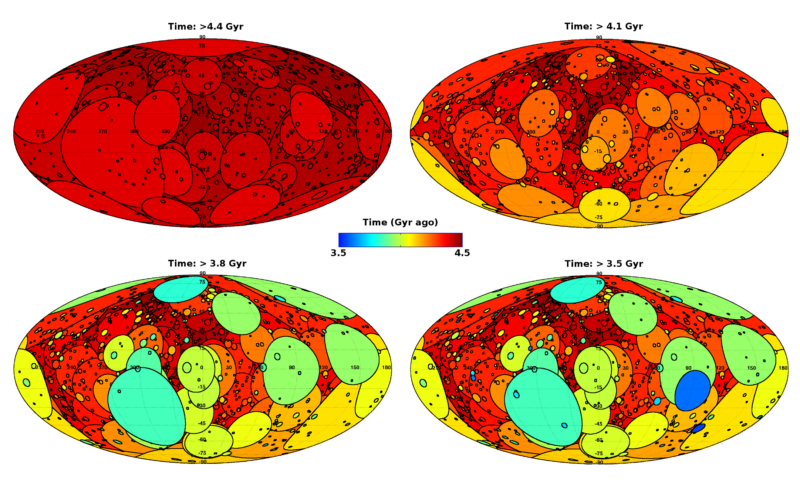What would the late heavy bombardment have done to the Earth’s surface?

Enlarge / Each panel shows the modeled effects of early Earth's bombardment. Circles show the regions affected by each impact, with diameters corresponding to the final size of craters for impactors smaller than 100 kilometers in diameter. For larger impactors, the circle size corresponds to size of the region buried by impact-generated melt. Color coding indicates the timing of the impacts. The smallest impactors considered in this model have a diameter of 15 kilometers. (credit: Simone Marchi, Southwest Research Institute)
When it comes to space rocks slamming into Earth, two stand out. There's the one that killed the dinosaurs 65 million years ago (goodbye T-rex, hello mammals!) and the one that formed Earth's Moon. The asteroid that hurtled into the Yucatan peninsula and decimated the dinosaurs was a mere 10 kilometers in diameter. The impactor that formed the Moon, on the other hand, may have been about the size of Mars. But between the gigantic lunar-forming impact and the comparatively diminutive harbinger of dinosaurian death, Earth was certainly battered by other bodies.
At the 2023 Fall Meeting of the American Geophysical Union, scientists discussed what they've found when it comes to just how our planet has been shaped by asteroids that impacted the early Earth, causing everything from voluminous melts that covered swaths of the surface to ancient tsunamis that tore across the globe.
Modeling meltWhen the Moon-forming impactor smashed into Earth, much of the world became a sea of melted rock called a magma ocean (if it wasn't already melted). After this point, Earth had no more major additions of mass, said Simone Marchi, a planetary scientist at the Southwest Research Institute who creates computer models of the early Solar System and its planetary bodies, including Earth. But you still have this debris flying about," he said. This later phase of accretion may have lacked another lunar-scale impact, but likely featured large incoming asteroids. Predictions of the size and frequency distributions of this space flotsam indicate that there has to be a substantial number of objects larger than, say, 1,000 kilometers in diameter," Marchi said.